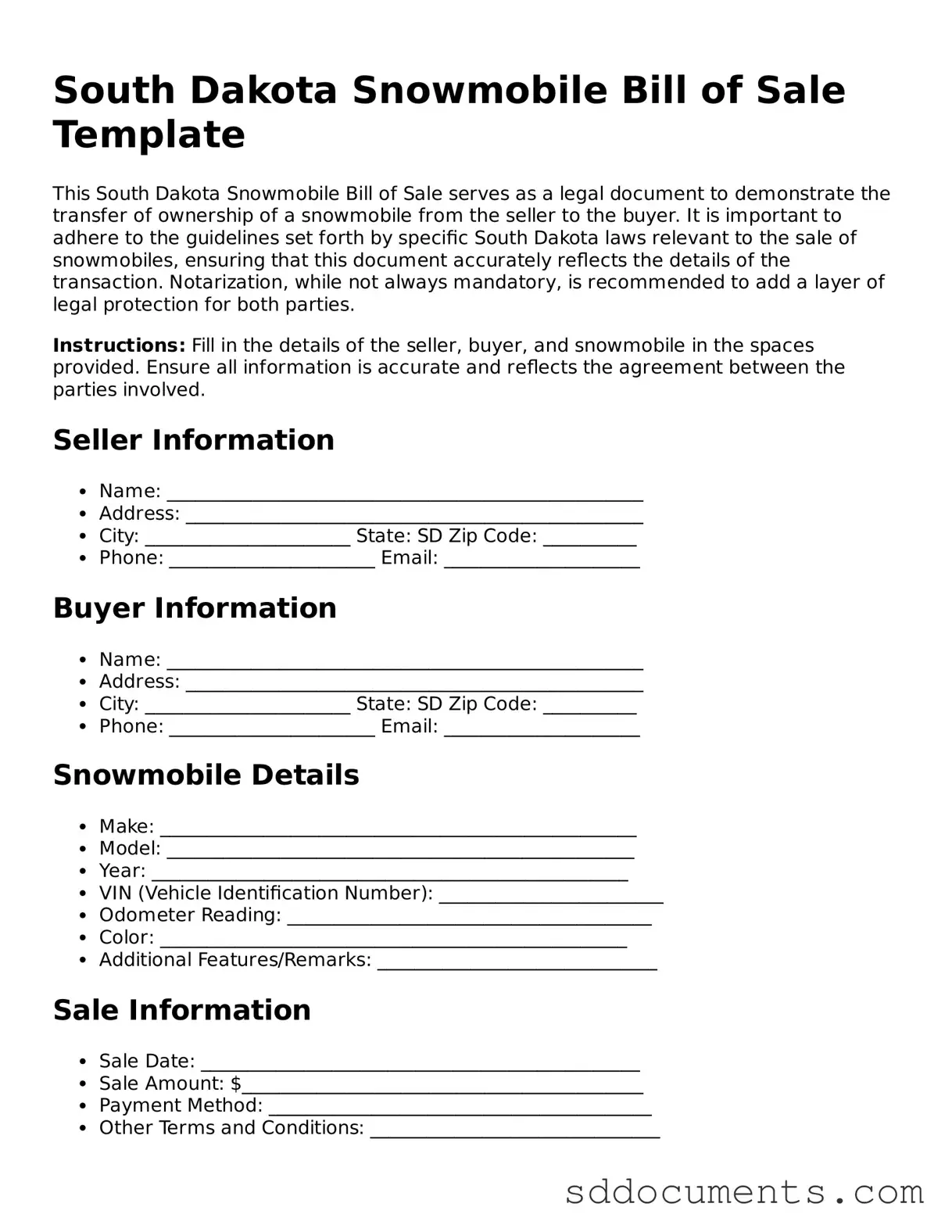Free Snowmobile Bill of Sale Template for South Dakota
The South Dakota Snowmobile Bill of Sale form is a crucial document used to transfer ownership of a snowmobile from one party to another. This form provides essential details about the transaction, ensuring both buyer and seller are protected. To facilitate a smooth sale, it’s important to fill out the form accurately; click the button below to get started.
Customize Document Online
